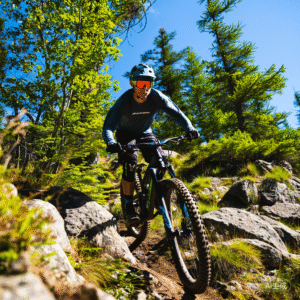The Brazilian aquaculture industry has experienced significant growth over the past decade, driven by increasing global demand for seafood and advancements in fish farming technologies. Central to this development are fish farming cages, which serve as the foundation for sustainable and efficient aquaculture operations. For businesses seeking reliable OEM partners to supply customized fishing nets and cage systems, understanding the critical attributes of these products is essential. This article provides a comprehensive comparison of key attributes of fish farming cages, focusing on material composition, structural design, durability, and environmental adaptability, while highlighting the expertise of professional OEM manufacturers in Brazil.
Material Composition: Balancing Strength and Environmental Resistance
The choice of material directly impacts the performance and longevity of fish farming cages. OEM manufacturers in Brazil commonly utilize three primary materials: high-density polyethylene (HDPE), polyethylene terephthalate (PET), and nylon. HDPE cages are favored for their exceptional resistance to UV degradation and saltwater corrosion, making them ideal for coastal and estuarine environments. PET-based nets, while slightly less durable in extreme conditions, offer superior flexibility and lower production costs. Nylon nets, though strong and abrasion-resistant, require frequent maintenance due to their susceptibility to biofouling and UV damage. Professional OEMs employ advanced polymer treatments, such as antioxidant coatings and UV stabilizers, to enhance material performance while adhering to local environmental regulations.
Structural Design: Optimizing Flow and Fish Welfare
Cage design significantly affects water circulation, fish health, and operational efficiency. Two dominant designs dominate the Brazilian market: gravity cages and floating cages. Gravity cages rely on submerged weights to maintain stability, reducing entanglement risks for marine life. Floating cages, supported by buoyant collars, allow for easier monitoring and harvesting but may require additional anchoring systems in areas with strong currents. OEM manufacturers integrate computational fluid dynamics (CFD) modeling to optimize net geometry, ensuring minimal water resistance while maximizing oxygen exchange. Customizable features such as adjustable mesh sizes (ranging from 10mm to 50mm) and variable depths (10–30 meters) enable tailored solutions for species-specific requirements, including tilapia, tambaqui, and marine shrimp.

Durability and Maintenance: Cost-Effective Long-Term Solutions
The lifespan of fish farming cages in Brazil typically ranges from 5 to 15 years, depending on material quality and environmental stressors. OEMs conduct accelerated aging tests to simulate real-world conditions, including exposure to salinity fluctuations (0–35 ppt), temperature variations (15–32°C), and mechanical strain from fish movement. High-end HDPE cages with reinforced knots and anti-fouling additives demonstrate 20–30% longer service life compared to standard models. Regular maintenance protocols, such as antifouling treatments and structural inspections, further extend cage usability. Leading OEMs offer predictive maintenance programs using IoT-enabled sensors to monitor net integrity and detect early signs of wear.
Environmental and Regulatory Compliance
Brazilian aquaculture operations must comply with stringent environmental standards set by IBAMA and CONAMA. OEM manufacturers ensure their fishing nets meet criteria for reduced plastic leaching, biodegradability (where applicable), and minimal ecological disruption. For instance, bio-based polymers derived from sugarcane are increasingly used to produce partially biodegradable nets, aligning with national sustainability goals. Additionally, OEMs collaborate with local universities to develop cage systems that mitigate interactions with endangered species, such as sea turtles and manatees, through modified mesh patterns and acoustic deterrents.
Cost-Benefit Analysis: Balancing Initial Investment and ROI
While HDPE cages entail higher upfront costs (approximately 18 per square meter), their longevity and low maintenance requirements result in a lower total cost of ownership (TCO) over 10 years. In contrast, PET and nylon cages cost 20–35% less initially but require more frequent replacements and repairs. OEMs provide lifecycle cost calculators to help clients evaluate trade-offs between material choices, design complexity, and operational budgets. Customization options, such as integrating feeding rings or waste collection systems, further enhance ROI by improving feed conversion ratios (FCR) and reducing environmental impact.
OEM Expertise in Brazil: Meeting Local Demands with Global Standards
Brazilian OEM manufacturers combine local market knowledge with international quality certifications (e.g., ISO 9001, BAP) to deliver cutting-edge solutions. Key differentiators include:
-
Localized R&D: Adapting net designs to Brazil’s diverse aquatic ecosystems, from the Amazon River basin to the South Atlantic. -
Scalable Production: Offering modular cage systems suitable for small-scale family farms and large industrial operations. -
Technical Support: Providing on-site installation guidance and training programs for cage management. -
Sustainability Initiatives: Partnering with NGOs to promote circular economy practices, such as recycling old nets into raw materials for new products.
Conclusion
Selecting the right fish farming cage requires a nuanced understanding of material properties, design specifications, and environmental factors. OEM manufacturers in Brazil leverage advanced engineering and regional expertise to deliver durable, compliant, and cost-effective solutions tailored to the aquaculture industry’s evolving needs. By prioritizing innovation and sustainability, these partners play a critical role in supporting Brazil’s position as a global aquaculture leader.
References:
-
FAO Fisheries and Aquaculture Department -
Brazilian Association of Animal Protein (ABPA) -
National Council for Scientific and Technological Development (CNPq) -
Journal of Aquaculture Engineering and Environmental Sciences”